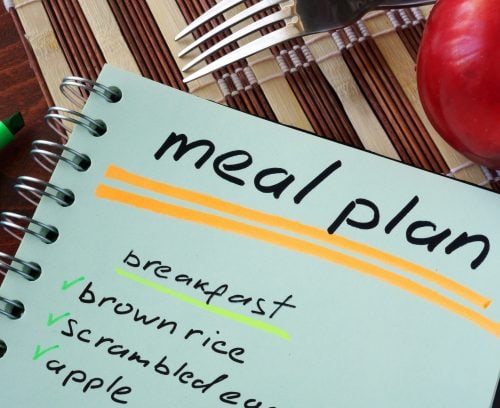Planning your weekly meals saves time, reduces waste, and helps you eat better. It also makes grocery shopping easier and ensures you have everything you need for each meal. A clear plan keeps your week organized and your kitchen stress-free.
1. Set Your Weekly Goals
Before planning, decide what you want to achieve with your meals. It could be saving money, eating healthier, or cutting down on takeout. Write your goals clearly so you can plan around them. News Route explains that having specific meal goals improves consistency and keeps you from making random food choices.
2. Check Your Schedule First
Look at your weekly calendar. Note busy days when you’ll need quick meals and free days when you can cook more. This helps you choose meals that fit your lifestyle. If one evening is packed, plan for a simple dish like soup or salad instead of a full meal that takes hours.
3. Take Inventory of What You Already Have
Before making your grocery list, check your pantry, fridge, and freezer. Use what you already own to avoid buying duplicates. This saves money and reduces food waste.
4. Choose Your Recipes in Advance
Pick recipes that match your goals and available time. If your week is busy, go for simple dishes that take less than 30 minutes. Use family favorites or try one new recipe each week. Keep a balance between proteins, vegetables, and grains for variety.
5. Create a Meal Plan Template
Use a simple weekly chart with days and meals listed. Write down what you’ll have for breakfast, lunch, and dinner. This makes it easier to see your plan at a glance. You can use a paper planner, a whiteboard, or a digital app.
6. Balance Nutrition in Each Meal
Each meal should have a good mix of nutrients. Include lean proteins, whole grains, and vegetables. Add fruits and dairy if needed. Balanced meals keep you full longer and improve your energy throughout the day.
7. Make a Shopping List
After finalizing your plan, write a detailed grocery list. Divide it by category such as produce, meat, dairy, and grains. Stick to the list when shopping to avoid impulse buys.
8. Shop Smartly
Buy ingredients that can work in multiple dishes. For example, chicken can be used in soups, salads, or wraps. Purchase frozen or canned items for backup. Shopping efficiently saves both time and money.
9. Prep Ingredients in Advance
Meal prep makes your week smoother. Chop vegetables, cook grains, or marinate meat in advance. Store them in containers labeled for each meal. Info Digital Space often shares that early preparation saves hours during the week and prevents midweek cooking stress.
10. Cook in Batches
Batch cooking works well for busy schedules. Prepare large portions of soups, rice, or pasta and store them in the fridge or freezer. Divide them into servings for easy reheating.
11. Store Meals Properly
Use airtight containers to keep food fresh. Label each one with the date and meal name. Keep cooked meals in the fridge for up to four days or freeze for longer.
12. Plan for Leftovers
Leftovers save cooking time and reduce waste. Plan one or two leftover nights in your week. Use extra cooked meat or vegetables for wraps, stir-fries, or salads.
13. Add Variety Each Week
Change your meal plan weekly to keep things interesting. Try different cuisines, switch protein sources, and include seasonal produce. Variety keeps you motivated to stick with your plan.
14. Keep Quick Staples at Home
Always keep pantry staples like pasta, rice, eggs, canned beans, and frozen vegetables. These can be used when plans change or time is short.
15. Make Room for Snacks
Include healthy snacks like yogurt, nuts, or fruit in your plan. This helps you avoid processed foods during hunger breaks.
16. Stay Flexible
Even with planning, some days may not go as expected. Keep one or two quick meal options ready. Flexibility keeps your plan practical and stress-free.
17. Involve Family Members
Ask family members what meals they prefer. It increases satisfaction and reduces waste. Children can help with simple tasks like mixing or setting the table.
18. Review and Adjust Weekly
At the end of each week, review what worked and what didn’t. Adjust your next plan based on your experience. Over time, planning will become faster and easier.
19. Use Technology Wisely
Meal planning apps can store recipes, generate shopping lists, and track your pantry. These tools simplify planning and make it more efficient.
20. Enjoy the Process
Planning meals should not feel like a chore. It’s a habit that brings structure and peace to your week. Global Blogging points out that meal planning builds mindfulness around food choices and helps families eat more balanced meals together.
Meal planning improves how you shop, cook, and eat. With practice, it saves time and supports a healthier lifestyle. Keep your plan realistic, flexible, and centered on your goals.

